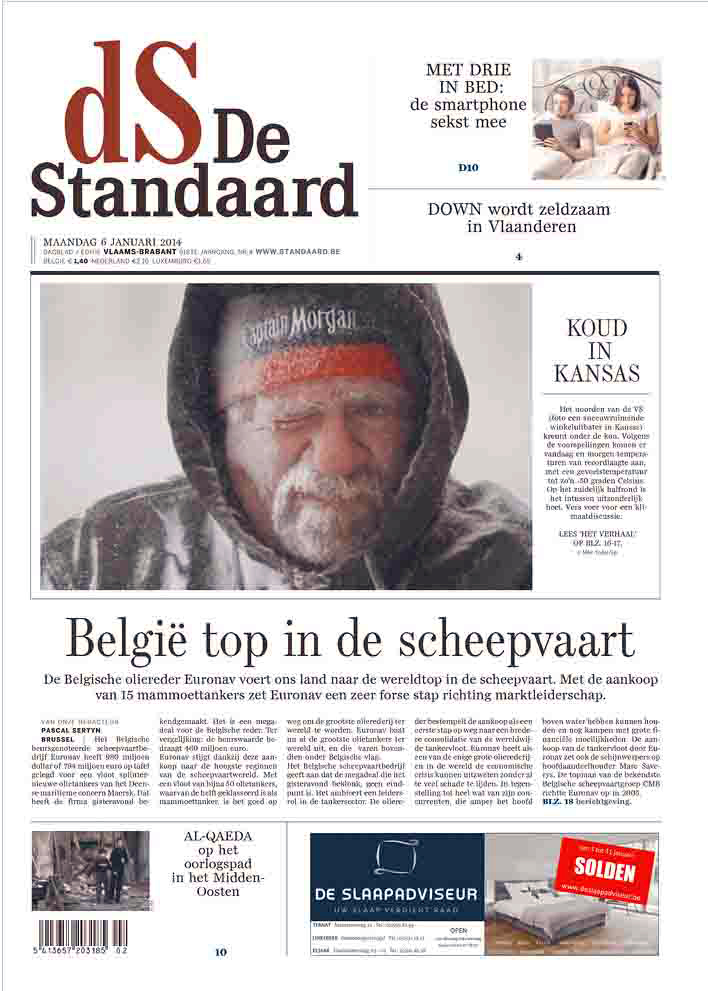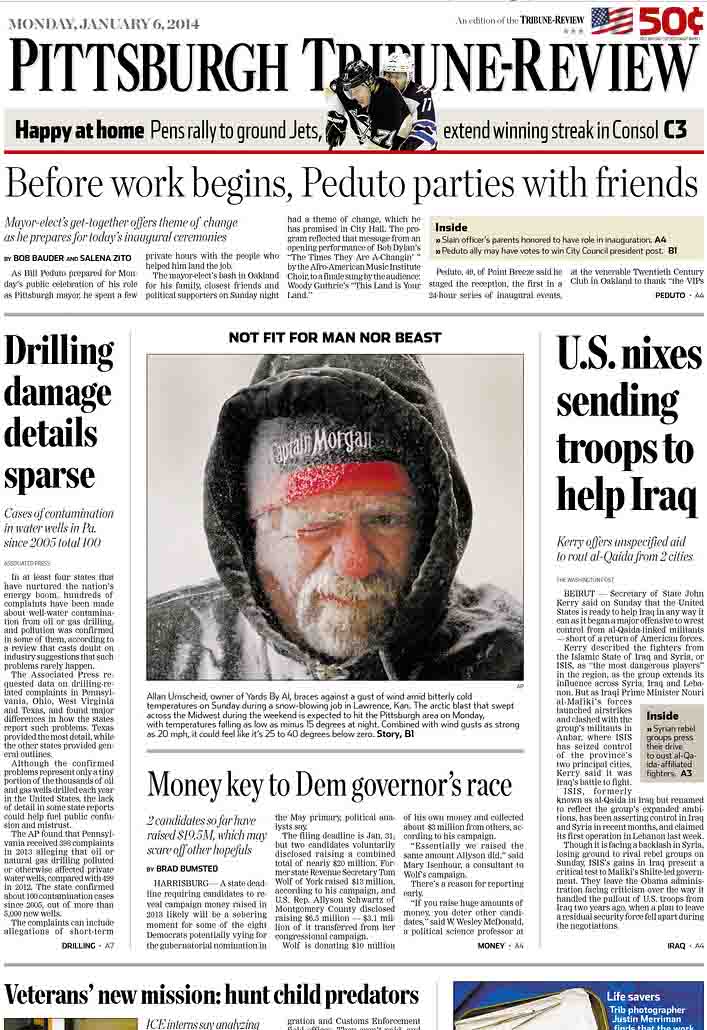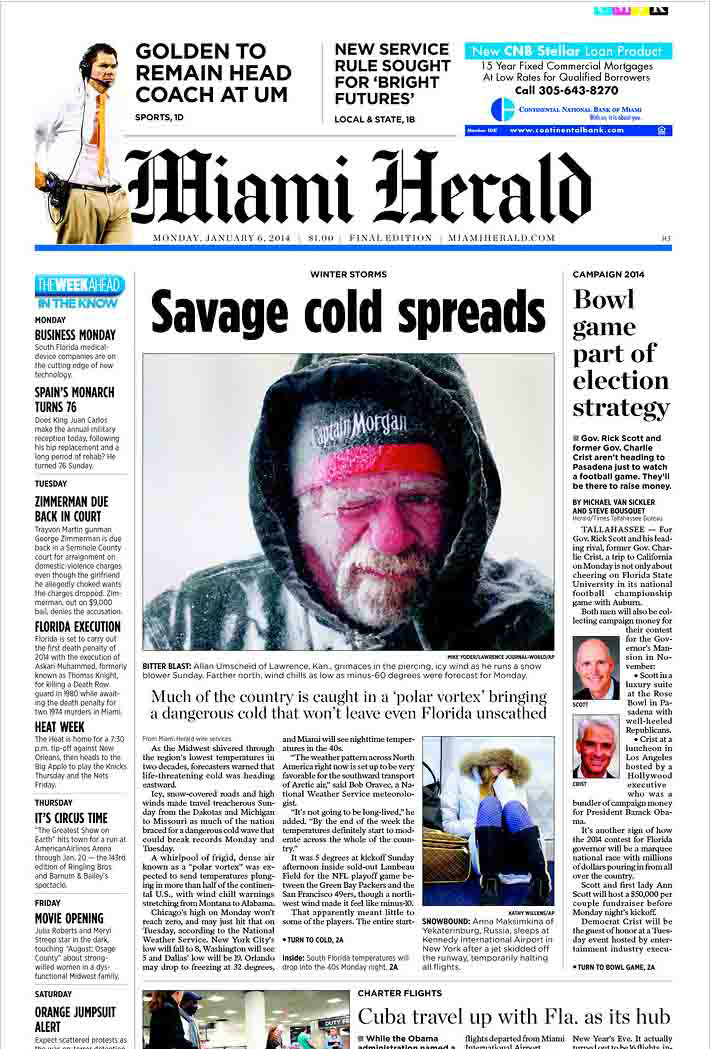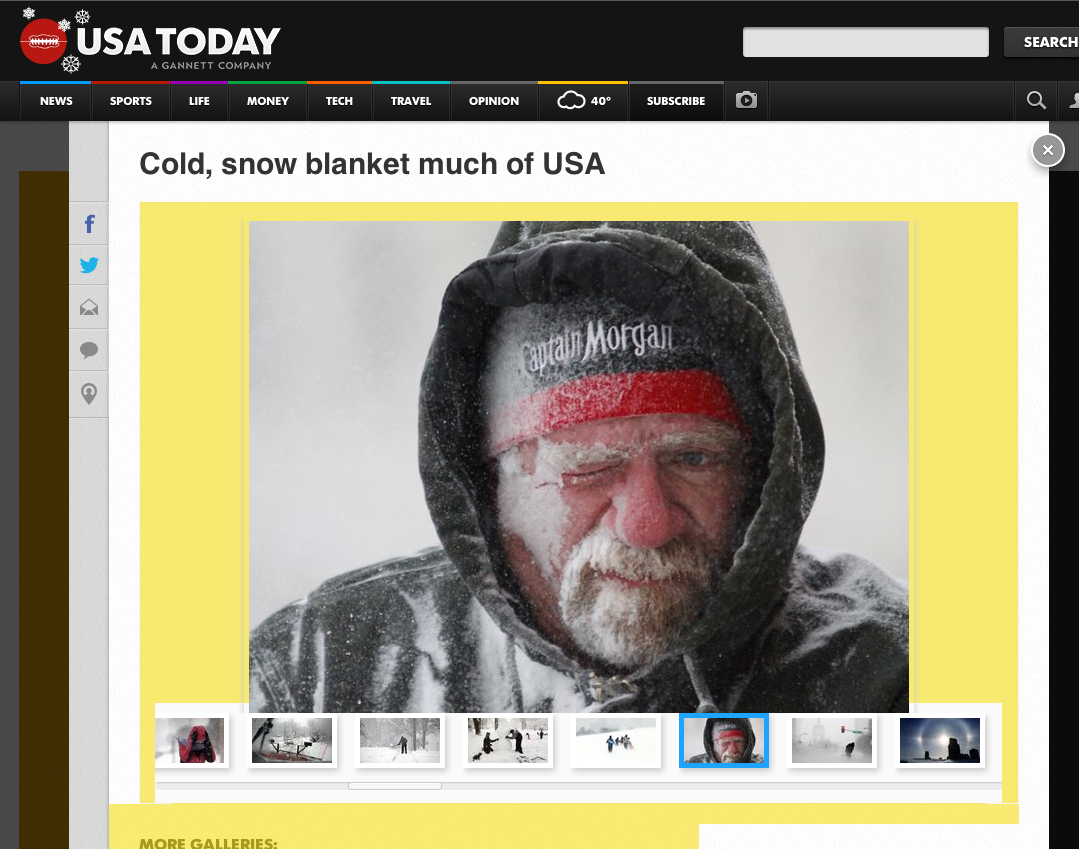Polar Vortex
On Sunday morning, January 5, 2014, I left the comfort of my warm home to pursue a cold-weather photograph for the newspaper where I worked. There were 3 inches of snow on the ground, temperatures in the single digits, and wind gusting 15-20 mph. The country was in the middle of what weather pundits were calling a 'polar vortex'. I wound up in front of a man clearing a sidewalk with a snowblower.
I composed loose vertical shots of him and the snowblower approaching me. As the man got closer I remained in position, framing tighter and tighter with my telephoto lens. My last visual memory was of a close-up of the man’s frozen face. When I reviewed my photos, I discarded the wider scenes and chose the tighter headshot. It looked colder and had much more impact. I transmitted it to the newspaper, to the Associated Press, and posted it on my Facebook page.
When an image is uploaded to The Associated Press, it eventually reaches the photo desk in New York and then gets forwarded to all AP member newspapers around the world for possible print use. Later, an editor in N.Y. also got the Lawrence Journal-World’s permission to distribute the image to online news sites.
By that evening, people on my Facebook page were commenting that they had seen the photo on CNN.com, Washington Post.com and the CBS Evening News. In social media jargon, my photo was trending. Monday morning I was told it had made the front page of the Philadelphia Inquirer, so I surveyed the Newseum’s Today’s Front Pages gallery. This site displays each day’s front pages of more than 800 worldwide newspapers, including the Journal-World. It didn’t take me long to see that several newspapers had selected my photo to visually represent the Polar Vortex. The Pittsburgh Tribune-Review, Miami Herald and even the Brussels, Belgium were just a few who ran it as their lead image on the front page.
I contacted Kellen Henry, the mobile/digital producer for Associated Press. He had helped start the snowball rolling, so-to-speak, by selecting my image as the lead photo on the Associated Press's mobile site.
“By my count, we’d moved close to 500 cold-weather photos over that 36-hour period. Many of them were icy landscapes or bundled-up pedestrians, faces covered by scarves and hoods. I think what set this photo apart for me was the full view of the gentleman’s face,” Henry said. “To the reader, he could be a commuter, a construction worker, a homeless person, or just a guy out shoveling show, but his expression really captures everything you need to know: It’s so cold out there it hurts.”
What amazes me the most, is that without knowledge of what other publications were using, editors in addition to Henry made the same picture choice. I’m glad I had the sense to pick that particular frame. I can tell you two things that I’ve learned from this experience: My name is spelled the same in Belgium as it is in Kansas and the spotlight on any single image dims quickly, demanding new work to take its place. In the words of my editor at the Lawrence Journal-World, “What have you got for me today?”









